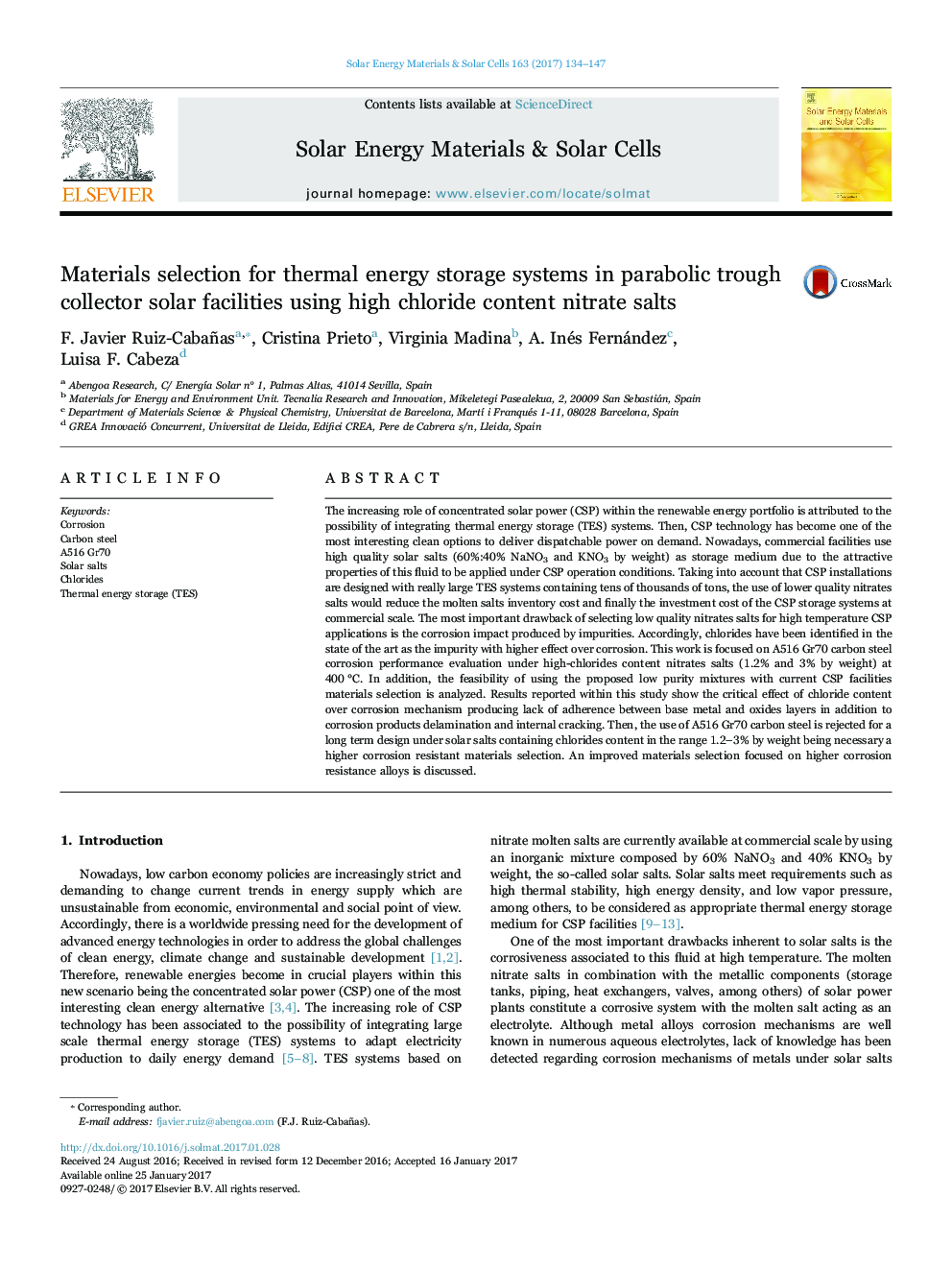| کد مقاله | کد نشریه | سال انتشار | مقاله انگلیسی | نسخه تمام متن |
|---|---|---|---|---|
| 6457188 | 1420660 | 2017 | 14 صفحه PDF | دانلود رایگان |
- High chloride content nitrate salts for TES application in trough technology has been evaluated
- Current materials selection, A516 Gr70, shows poor corrosion performance under test conditions
- Ashby methodology has been applied to analyze a new materials selection
- Cr-Mo alloyed steels, ferritic steels and martensitic steels has been selected as potential candidates
The increasing role of concentrated solar power (CSP) within the renewable energy portfolio is attributed to the possibility of integrating thermal energy storage (TES) systems. Then, CSP technology has become one of the most interesting clean options to deliver dispatchable power on demand. Nowadays, commercial facilities use high quality solar salts (60%:40% NaNO3 and KNO3 by weight) as storage medium due to the attractive properties of this fluid to be applied under CSP operation conditions. Taking into account that CSP installations are designed with really large TES systems containing tens of thousands of tons, the use of lower quality nitrates salts would reduce the molten salts inventory cost and finally the investment cost of the CSP storage systems at commercial scale. The most important drawback of selecting low quality nitrates salts for high temperature CSP applications is the corrosion impact produced by impurities. Accordingly, chlorides have been identified in the state of the art as the impurity with higher effect over corrosion. This work is focused on A516 Gr70 carbon steel corrosion performance evaluation under high-chlorides content nitrates salts (1.2% and 3% by weight) at 400 °C. In addition, the feasibility of using the proposed low purity mixtures with current CSP facilities materials selection is analyzed. Results reported within this study show the critical effect of chloride content over corrosion mechanism producing lack of adherence between base metal and oxides layers in addition to corrosion products delamination and internal cracking. Then, the use of A516 Gr70 carbon steel is rejected for a long term design under solar salts containing chlorides content in the range 1.2-3% by weight being necessary a higher corrosion resistant materials selection. An improved materials selection focused on higher corrosion resistance alloys is discussed.
Journal: Solar Energy Materials and Solar Cells - Volume 163, April 2017, Pages 134-147
